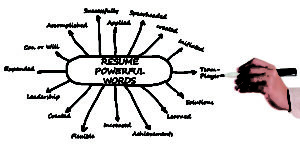By Daniel Beunza and Derin Kent, The Conversation
Companies around the world are debating how and when to return to the office. Health and safety has taken on a whole new significance in the era of coronavirus. To bring people back safely, the options for office redesign are bewildering. How should desks be arranged to enable social distancing alongside the benefits of being in the same room? And do people need to return for five days a week?
Many companies are looking to have some employees work from home, some of the time. But unless careful thinking goes into this, companies run the risk of getting stuck in the middle, achieving neither the benefits of the traditional office nor the safety conferred by the home.
Consider, for instance, the 6 Feet Office. This concept, developed by a commercial real estate multinational, Cushman and Wakefield, aims to ensure that employees remain six feet apart at all times. It is achieved by spacing desks, creating one-way people circulation, and including visual signs in the carpeting around each desk so as to nudge people to keep their distance.
This idea runs the risk of throwing the baby out with the bathwater. As architecture scholar Kerstin Sailer has noted, its combination of distanced furniture, nudges, and warnings can also stigmatise social interaction, pushing all communication online, even in the office. If that is the case, why not just work from home?
Companies need to incorporate an essential lesson from the COVID-19 lockdown: Zoom works surprisingly well. But there are also lots of benefits to informal interaction – something a prearranged video call cannot replicate. In light of this, we propose a hybrid system of the best of both worlds. If fewer people are coming in to maintain social distancing, it is best to have all teams represented. And the office layout must facilitate connections between people rather than keeping them apart.
Planned vs unplanned communication
There’s an important distinction between planned and unplanned communication at work. Unplanned communication typically takes place via serendipitous encounters and, importantly, involves conversations across teams. Here proximity is needed.
This is because different teams are typically not part of the same reporting line, and so communication depends on unplanned engagements like overhearing each other talk or chance encounters in the corridor. This can have real business benefits. As one of us has documented in our recent book, unplanned social interaction across nearby desks in a Wall Street trading floor improved the use of financial models.
In the case of planned communication, remote conferencing technology has made proximity less important. The reason is that within-team communication typically happens on a planned and routine basis, so all it needs is a digital platform.
This message came out clearly from a panel event we organised at the LSE’s Systemic Risk Centre. Charles Bristow, global head of rates trading at investment bank JP Morgan, and one of the panellists, explained that “a team of people trading together on a single product are getting incoming inquiries through the same channels” and “use the same tools”. For that reason, communicating remotely is incredibly easy and can even be more efficient.
So physical proximity is primarily needed for unplanned communication. It means remote working can continue at little cost to planned communication. And it potentially means that if companies want to bring limited numbers of people back to the office, they should focus on having at least one member from every team. This will enable cross-team communication, which relies on physical proximity.
Keeping everyone engaged
Another important element of office design to take into account is the extent that it facilitates employee engagement – whether people leave their desks to come into face-to-face contact. This is important for building better relationships between colleagues and company culture.
To facilitate this, the focus on social distancing must distinguish between distance and accessibility. While distance reduces the extent that people can engage with each other and collaborate, research in architecture shows that ease of access and facilitating movement can partly compensate for distance.
As Sailer has established, in a house where every room is accessible to every other room via a door, connection is far easier than in one where you can only access a given room from the adjoining one. The same degree of distancing between people, in other words, can lead to vastly different levels of engagement.
To achieve this connectivity (while maintaining social distance), companies can leverage the staggered return of employees to remove some desks and create a corridor around the periphery of their open plan offices, giving employees the chance to easily access each other. Encounters and conversations can be further facilitated by nooks and corners outside such a corridor, so that employees can have quick one-on-ones without blocking circulation.
The return to the office after months of remote working gives companies a chance to make their setups more effective. They can incorporate the benefits of remote working, while ensuring people can interact and exchange ideas in a safer way than if they blindly replicated their pre-COVID work arrangements.




